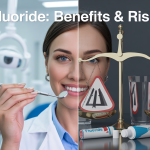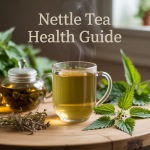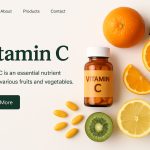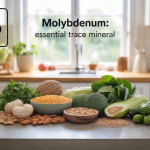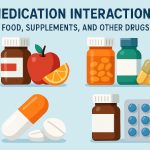What are Omega-3 Fatty Acids?
Omega-3 fatty acids are essential fats your body can’t make on its own but desperately needs for optimal health. These powerful nutrients play crucial roles in everything from brain function to heart health, yet millions of people don’t get enough through their daily diet.
This guide is for anyone wanting to understand omega-3s better – from health-conscious individuals looking to improve their wellness to those wondering if they need supplements or simply want to eat smarter.
We’ll explore the science-backed health benefits that make omega-3s so important for your body and mind. You’ll also discover the best food sources to naturally boost your intake, plus practical tips for choosing supplements when whole foods aren’t enough. Finally, we’ll cover the warning signs of omega-3 deficiency so you can spot potential problems before they impact your health.
Understanding Omega-3 Fatty Acids and Their Essential Nature

Definition and chemical structure that makes them unique
Omega-3 fatty acids belong to a special family of polyunsaturated fats distinguished by their unique molecular architecture. The “omega-3” name comes from their chemical structure – specifically, the location of the first double bond, which sits three carbon atoms away from the methyl end of the fatty acid chain. This positioning creates a distinctive bend in the molecule that gives omega-3s their remarkable biological properties.
Unlike saturated fats that remain solid at room temperature, these unsaturated fats stay fluid due to their kinked structure. This flexibility proves crucial when omega-3s become part of cell membranes, where they help maintain optimal membrane fluidity and function. The double bonds also make these fats more reactive and susceptible to oxidation, which explains why omega-3-rich foods can go rancid quickly when exposed to heat, light, or air.
The molecular structure directly impacts how these fats interact with enzymes, receptors, and other cellular components throughout your body. This unique architecture allows omega-3s to influence inflammation pathways, brain function, and cardiovascular health in ways that other fats simply cannot replicate.
Why your body cannot produce these vital nutrients
Your body lacks the specific enzymes needed to create omega-3 fatty acids from scratch, earning them the classification of “essential fatty acids.” While your cells can perform many complex biochemical reactions, they cannot insert double bonds in the precise omega-3 position required to manufacture these critical nutrients.
Human metabolism can produce various types of fats and even convert some fatty acids into others, but the enzymatic machinery stops short of omega-3 synthesis. The enzyme delta-15 desaturase, which would be needed to create the characteristic omega-3 double bond pattern, simply doesn’t exist in human cells. This biological limitation means every omega-3 molecule in your body must come from dietary sources.
Your liver can perform limited conversions between different omega-3 types, but even this process is highly inefficient. For example, your body can theoretically convert plant-based ALA into the more active EPA and DHA forms, but the conversion rate remains disappointingly low – typically less than 10% for EPA and even lower for DHA.
This metabolic constraint makes dietary intake or supplementation absolutely necessary for maintaining adequate omega-3 levels. Without regular consumption of omega-3 sources, your body’s stores gradually deplete, potentially leading to deficiency symptoms and health complications.
The three main types your body needs most
Alpha-linolenic acid (ALA) serves as the parent omega-3 fatty acid and the most abundant form in plant-based foods. Your body uses ALA as a starting material for producing other omega-3s, though the conversion process remains limited. ALA contributes to basic cellular functions and provides some anti-inflammatory benefits, but its biological activity pales compared to its marine-derived counterparts.
Eicosapentaenoic acid (EPA) acts as your body’s primary anti-inflammatory omega-3, playing a crucial role in immune system regulation and cardiovascular health. EPA gets incorporated into cell membranes throughout your body, where it competes with inflammatory omega-6 fatty acids for the same enzymatic pathways. When your cells have adequate EPA levels, they produce fewer inflammatory compounds and more anti-inflammatory mediators.
Docosahexaenoic acid (DHA) represents the most structurally complex omega-3 and the most abundant fat in your brain tissue. DHA makes up approximately 20% of all fatty acids in your cerebral cortex and 50% of the fatty acids in neural cell membranes. This omega-3 proves essential for brain development, cognitive function, and visual health throughout your lifetime.
| Omega-3 Type | Primary Sources | Main Functions | Conversion Efficiency |
|---|---|---|---|
| ALA | Flax, chia, walnuts | Basic cellular function | Parent compound |
| EPA | Fatty fish, algae | Anti-inflammatory | Limited from ALA |
| DHA | Fatty fish, algae | Brain and eye health | Very limited from ALA |
Each type serves distinct biological purposes, and optimal health requires adequate intake of all three forms rather than relying on your body’s limited conversion abilities.
Powerful Health Benefits That Transform Your Wellbeing

Heart Health Protection and Cardiovascular Disease Prevention
Omega-3 fatty acids act as powerful guardians for your cardiovascular system. EPA and DHA work together to reduce triglyceride levels by up to 30%, while also helping to lower blood pressure and decrease inflammation in blood vessels. These essential fats make your blood less sticky, reducing the risk of dangerous clots that can trigger heart attacks or strokes.
Regular omega-3 intake strengthens heart rhythm stability, preventing potentially fatal arrhythmias. The fatty acids also improve the flexibility of blood vessel walls, allowing better circulation and reducing strain on your heart. Studies show people with higher omega-3 levels have a 35% lower risk of heart disease compared to those with deficient levels.
Brain Function Enhancement and Cognitive Performance Boost
Your brain thrives on omega-3s, particularly DHA, which makes up nearly 20% of your brain’s fatty acid content. These nutrients fuel better memory formation, sharper focus, and faster information processing. People who maintain adequate omega-3 levels show improved performance on cognitive tests and better mental clarity throughout their lives.
Omega-3s support the production of key neurotransmitters like serotonin and dopamine, directly impacting mood stability and mental well-being. Research demonstrates that consistent omega-3 consumption can reduce the risk of age-related cognitive decline by up to 40% and may help prevent or slow the progression of dementia and Alzheimer’s disease.
Anti-inflammatory Effects That Reduce Chronic Disease Risk
Chronic inflammation silently damages your body over time, contributing to arthritis, diabetes, autoimmune conditions, and even cancer. Omega-3 fatty acids act as natural anti-inflammatory agents, producing specialized molecules called resolvins and protectins that actively resolve inflammatory responses.
These powerful compounds help reduce inflammatory markers like C-reactive protein and interleukin-6, which are linked to various chronic diseases. People with higher omega-3 intake experience less joint pain, reduced morning stiffness, and improved mobility. The anti-inflammatory effects also support immune system balance, helping your body fight infections while preventing harmful autoimmune reactions.
Eye Health Support and Vision Protection
DHA concentrates heavily in your retinal tissue, where it maintains the structural integrity of photoreceptor cells responsible for vision. Adequate omega-3 levels help prevent age-related macular degeneration, the leading cause of blindness in adults over 50.
These essential fats also support tear production, reducing dry eye syndrome symptoms and maintaining comfortable vision throughout the day. Omega-3s protect against diabetic retinopathy by improving blood vessel health in the eyes and reducing inflammation that can damage delicate retinal tissue. Regular consumption can slow vision deterioration and preserve eye health well into your golden years.
Top Food Sources to Maximize Your Omega-3 Intake

Fatty fish varieties with the highest concentrations
When it comes to omega-3 powerhouses, fatty fish reign supreme. Salmon leads the pack with approximately 1,500-2,000mg of EPA and DHA per 3.5-ounce serving. Wild-caught salmon typically contains higher omega-3 levels than farm-raised varieties, though both provide substantial benefits.
Mackerel delivers an impressive punch with up to 2,600mg of omega-3s per serving, making it one of the most concentrated sources available. Sardines offer around 1,400mg per serving and come with the added bonus of being sustainably caught and low in mercury.
Anchovies might be small, but they pack big nutritional value with about 1,400mg of omega-3s per serving. Their intense flavor makes them perfect for adding to salads, pizza, or pasta dishes. Herring provides roughly 1,600mg per serving and is particularly popular in Northern European cuisine.
| Fish Type | Omega-3 Content (per 3.5oz) | Mercury Level |
|---|---|---|
| Mackerel | 2,600mg | Low |
| Salmon | 1,500-2,000mg | Low |
| Herring | 1,600mg | Low |
| Sardines | 1,400mg | Very Low |
| Anchovies | 1,400mg | Very Low |
Tuna contains omega-3s but varies significantly by type. Bluefin tuna offers the highest concentration, while canned light tuna provides moderate amounts with lower mercury exposure compared to albacore.
Plant-based sources for vegetarians and vegans
Plant-based omega-3 sources primarily provide ALA (alpha-linolenic acid), which your body converts to EPA and DHA at relatively low rates of 5-15%. Despite this conversion challenge, these foods remain valuable for meeting omega-3 needs.
Flaxseeds top the plant-based list with an extraordinary 6,700mg of ALA per ounce. Ground flaxseeds offer better absorption than whole seeds since your digestive system can’t break down the tough outer shell effectively. Add ground flaxseeds to smoothies, yogurt, or baked goods.
Chia seeds provide about 5,000mg of ALA per ounce and create a gel-like texture when mixed with liquid, making them perfect for puddings or as egg substitutes in baking. Hemp seeds deliver around 2,600mg per ounce and have a mild, nutty flavor that works well sprinkled on salads or blended into smoothies.
Algae-based supplements represent the most direct plant-based source of EPA and DHA, since fish actually get their omega-3s from consuming algae. These supplements bypass the conversion process entirely, making them ideal for vegans seeking the specific omega-3 types found in fish.
Seaweed and kelp contain modest amounts of EPA and DHA, though concentrations vary widely depending on the species and growing conditions.
Nuts and seeds that pack omega-3 power
Walnuts stand out among nuts as the omega-3 champion, containing approximately 2,500mg of ALA per ounce. Just a handful of walnuts provides a significant portion of your daily omega-3 needs. Their versatility makes them easy to incorporate into both sweet and savory dishes.
Pumpkin seeds offer about 150mg of ALA per ounce along with impressive amounts of zinc, magnesium, and protein. Roasted pumpkin seeds make an excellent snack or crunchy salad topping.
Sunflower seeds provide modest omega-3 content while delivering vitamin E and healthy fats. Pine nuts contain small amounts of ALA but shine as a source of other beneficial nutrients.
Pecans contribute roughly 280mg of ALA per ounce and pair beautifully with both desserts and grain-based dishes. Brazil nuts offer minimal omega-3 content but provide selenium, an important mineral that works synergistically with omega-3s.
Daily serving suggestions:
- 1 ounce walnuts (about 14 halves)
- 2 tablespoons ground flaxseeds
- 1 ounce chia seeds (about 2 tablespoons)
- 3 ounces fatty fish twice weekly
Combining multiple plant-based sources throughout the day maximizes your ALA intake and supports better conversion to the more bioactive EPA and DHA forms your body needs for optimal health.
Smart Supplementation Strategies for Optimal Results

When supplements become necessary for your health
Your body can’t produce omega-3 fatty acids on its own, making dietary intake crucial. While a balanced diet rich in fatty fish, walnuts, and flaxseeds should be your first line of defense, many people struggle to meet their omega-3 needs through food alone.
Consider supplementation if you eat fish less than twice a week, follow a vegetarian or vegan diet, have specific health conditions like heart disease or arthritis, or live in areas where fresh, high-quality fish isn’t readily available. Pregnancy and breastfeeding also increase omega-3 requirements significantly.
Blood tests can reveal your omega-3 index – the percentage of EPA and DHA in your red blood cells. An optimal range sits between 8-12%, while levels below 4% indicate deficiency and increased health risks.
Choosing between fish oil, krill oil, and algae-based options
Each omega-3 supplement type offers unique advantages and considerations for different lifestyles and health goals.
| Supplement Type | EPA/DHA Content | Absorption | Best For | Price Range |
|---|---|---|---|---|
| Fish Oil | High | Good | General health, budget-conscious | Low-Medium |
| Krill Oil | Moderate | Excellent | Enhanced absorption, antioxidants | Medium-High |
| Algae-Based | Variable | Good | Vegans, environmental concerns | High |
Fish oil remains the most researched and cost-effective option. Look for molecularly distilled products that remove contaminants while preserving potency. The triglyceride form absorbs better than ethyl esters.
Krill oil contains phospholipids that enhance absorption, meaning you might need smaller doses. The natural astaxanthin provides additional antioxidant benefits, though at a higher price point.
Algae-based supplements offer the only truly plant-based source of EPA and DHA, making them perfect for vegans and those concerned about ocean sustainability. While typically more expensive, they’re free from fishy aftertastes and marine pollutants.
Proper dosage guidelines for maximum benefit
Omega-3 dosing isn’t one-size-fits-all. Your optimal intake depends on your current health status, diet, and specific goals.
General Health Maintenance:
- EPA + DHA combined: 250-500mg daily
- Equivalent to eating fatty fish twice weekly
Therapeutic Applications:
- Heart health: 1000-2000mg EPA + DHA daily
- Brain health and mood: 1000-2000mg daily, emphasizing EPA
- Joint health: 2000-3000mg daily
- Dry eyes: 1000-2000mg daily with higher DHA content
Timing and absorption tips:
- Take with meals containing fat for better absorption
- Split larger doses throughout the day to minimize digestive upset
- Store in refrigerator to prevent rancidity
- Consider enteric-coated capsules if you experience fishy burps
Start with lower doses and gradually increase to assess tolerance. Some people experience mild digestive issues initially, which typically resolve within a few days.
Quality indicators to look for when purchasing supplements
Not all omega-3 supplements are created equal. Poor-quality products can be rancid, contaminated, or contain far less omega-3s than advertised.
Third-party testing stands as the gold standard for quality assurance. Look for certifications from organizations like NSF International, USP, or IFOS (International Fish Oil Standards). These independent labs test for potency, purity, and freshness.
Freshness indicators help you avoid rancid products:
- Expiration dates should be at least 12 months out
- Totox (total oxidation) values should be under 26
- Peroxide values under 5 milliequivalents per kilogram
- Fresh, mild ocean smell – never fishy or sharp
Purity standards protect against contaminants:
- Mercury levels below 0.1 parts per million
- PCB content under 90 parts per billion
- Dioxin levels below WHO standards
- Heavy metals testing results available
Label transparency reveals manufacturer integrity:
- Specific EPA and DHA amounts per serving
- Form of omega-3s (triglyceride vs ethyl ester)
- Source of fish or algae clearly stated
- Processing methods explained
- Contact information for customer questions
Avoid products with vague labeling like “omega-3 blend” without specific EPA/DHA breakdowns. Reputable manufacturers willingly share detailed test results and sourcing information.
Common Deficiency Signs and Health Risks to Avoid
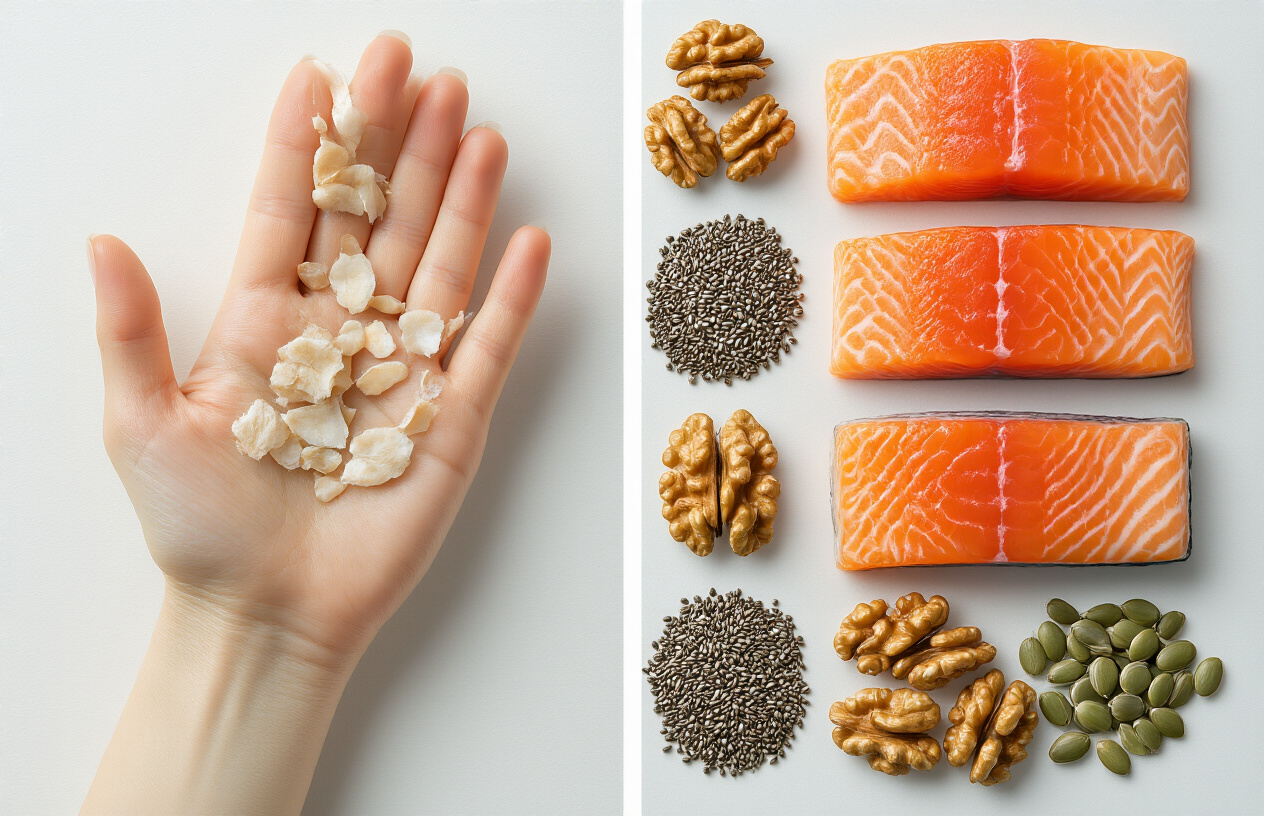
Physical symptoms that signal low omega-3 levels
Your body has clever ways of telling you when omega-3 levels drop too low. Dry, flaky skin often appears first, especially around your elbows, knees, and heels. This happens because omega-3s help maintain your skin’s protective barrier and natural moisture.
Hair changes come next – strands become brittle, dull, and may start falling out more than usual. Your nails might develop ridges or become weak and prone to breaking. These symptoms occur because omega-3 fatty acids play a crucial role in maintaining healthy cell membranes throughout your body.
Brain fog and concentration problems frequently signal deficiency. You might find yourself forgetting simple things, struggling to focus during meetings, or feeling mentally sluggish. Sleep disturbances often accompany these cognitive issues, with many people reporting difficulty falling asleep or staying asleep through the night.
Joint stiffness and muscle soreness can indicate low omega-3 levels, particularly if these symptoms appear without obvious cause like intense exercise. Your eyes may feel persistently dry, gritty, or irritated – a sign that tear production has decreased.
Mood changes deserve special attention. Increased irritability, anxiety, or feelings of depression can all stem from omega-3 deficiency. Some people notice they feel more emotionally reactive or have trouble managing stress that previously felt manageable.
Long-term health consequences of inadequate intake
Chronic omega-3 deficiency creates a cascade of health problems that compound over time. Cardiovascular disease risk shoots up dramatically when these essential fats remain low for months or years. Your arteries become stiffer, blood pressure tends to rise, and dangerous inflammation spreads throughout your circulatory system.
Brain health takes a serious hit with prolonged deficiency. Memory problems worsen, cognitive decline accelerates, and your risk for dementia and Alzheimer’s disease climbs significantly. The brain relies heavily on omega-3s for structure and function – without adequate levels, neural connections deteriorate.
| Health Area | Short-term Effects | Long-term Consequences |
|---|---|---|
| Heart | Irregular rhythm | Heart disease, stroke |
| Brain | Poor focus | Cognitive decline, dementia |
| Joints | Stiffness | Arthritis, chronic pain |
| Eyes | Dryness | Macular degeneration |
| Immune System | Frequent colds | Autoimmune disorders |
Inflammatory conditions flourish when omega-3 levels stay low. Arthritis becomes more severe and painful, autoimmune diseases may develop or worsen, and your body struggles to heal from injuries or infections. Chronic inflammation also accelerates aging and increases cancer risk.
Mental health deteriorates progressively without sufficient omega-3s. Depression becomes more treatment-resistant, anxiety disorders intensify, and bipolar symptoms can become harder to manage. Children with chronic deficiency may develop learning disabilities or behavioral problems that persist into adulthood.
Population groups at highest risk for deficiency
Vegetarians and vegans face the greatest challenge getting adequate omega-3s, especially the crucial EPA and DHA forms found primarily in fish. Plant-based sources like flaxseed and walnuts provide ALA, but your body converts only small amounts to the more active EPA and DHA forms.
Pregnant and breastfeeding women need extra omega-3s for fetal brain development and their own health, yet many don’t consume enough. The developing baby draws heavily on mom’s omega-3 stores, potentially leaving her deficient if intake doesn’t increase.
Older adults often develop deficiency due to decreased appetite, medication interactions, or difficulty chewing fish. Their bodies also become less efficient at converting plant-based omega-3s, making direct sources more important.
People with digestive disorders like Crohn’s disease, ulcerative colitis, or celiac disease frequently struggle with omega-3 absorption, even when consuming adequate amounts. Fat malabsorption issues prevent these essential fatty acids from entering the bloodstream effectively.
Children and teenagers eating typical Western diets often fall short, especially those who refuse fish or have limited access to omega-3-rich foods. Fast food diets high in omega-6 fatty acids can actually worsen the imbalance, making deficiency more likely.
Individuals taking certain medications – particularly statins, blood thinners, or some antidepressants – may need higher omega-3 intake to maintain optimal levels, as these drugs can interfere with absorption or metabolism.

Omega-3 fatty acids are your body’s best friend when it comes to fighting inflammation, supporting heart health, and keeping your brain sharp. These essential fats can’t be made by your body, so you need to get them from food sources like fatty fish, walnuts, and flax seeds, or through high-quality supplements when your diet falls short.
The signs of omega-3 deficiency are often overlooked – dry skin, joint pain, poor concentration, and mood swings can all point to low levels of these crucial nutrients. Don’t wait for these warning signs to appear. Start adding more omega-3 rich foods to your meals today, and consider talking to your healthcare provider about whether supplementation makes sense for your lifestyle. Your heart, brain, and overall health will thank you for making this simple but powerful change.
